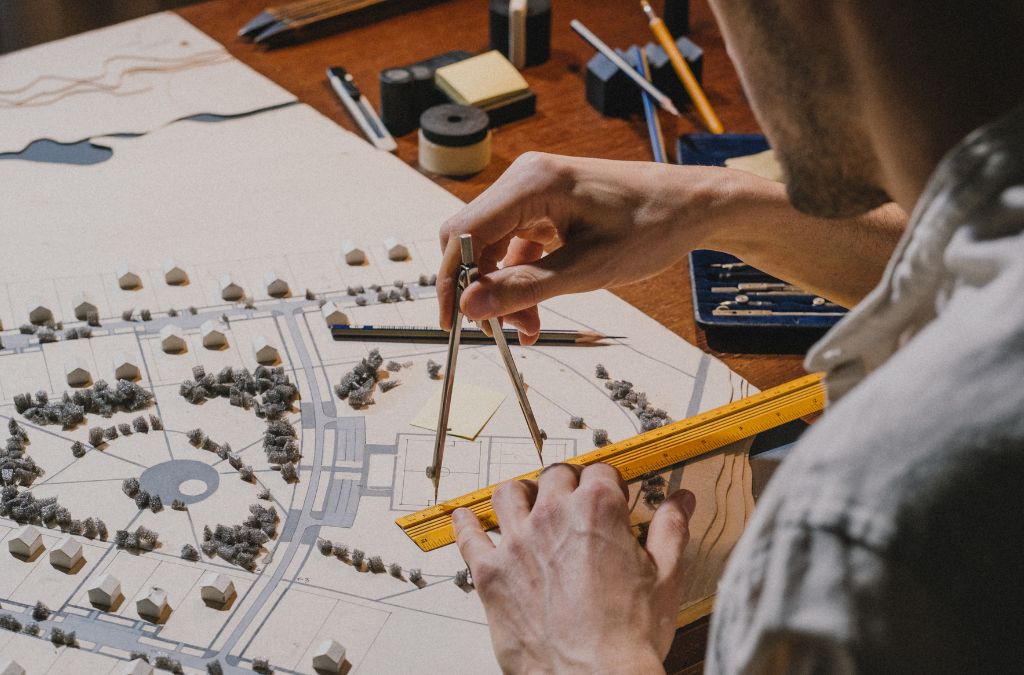-
Table of Contents
- Innovative Designs and Architectural Excellence: The Impact of a Skilled Architect
- The Role of an Architect
- Key Responsibilities
- Innovative Design Approaches
- Examples of Innovative Designs
- Architectural Excellence and Its Impact
- Case Studies of Architectural Excellence
- The Future of Architecture
- Trends Shaping the Future
- Conclusion
Innovative Designs and Architectural Excellence: The Impact of a Skilled Architect
Architecture is more than just the creation of buildings; it is an art form that shapes the environment and influences the way people live and interact. The role of a skilled architect is pivotal in transforming ideas into tangible structures that are both functional and aesthetically pleasing. This article explores the significance of innovative designs and architectural excellence, highlighting the profound impact a skilled architect can have on the built environment.
The Role of an Architect
An architect is responsible for designing buildings and other structures, ensuring they are safe, functional, and visually appealing. Their work involves a combination of creativity, technical knowledge, and an understanding of the needs and desires of the people who will use the spaces they create. Architects must consider various factors, including environmental sustainability, cultural context, and technological advancements, to produce designs that stand the test of time.
Key Responsibilities
- Conceptualizing and developing design ideas
- Creating detailed architectural plans and blueprints
- Collaborating with clients, engineers, and contractors
- Ensuring compliance with building codes and regulations
- Overseeing construction projects to ensure design integrity
Innovative Design Approaches
Innovation in architecture involves pushing the boundaries of traditional design to create unique and forward-thinking structures. This can be achieved through the use of new materials, advanced construction techniques, and the integration of cutting-edge technology. Innovative designs not only enhance the aesthetic appeal of buildings but also improve their functionality and sustainability.
Examples of Innovative Designs
- The Shard, London: Designed by Renzo Piano, this iconic skyscraper features a unique glass façade that reflects the sky and surrounding cityscape. Its innovative design includes energy-efficient systems and sustainable materials.
- Fallingwater, Pennsylvania: Frank Lloyd Wright’s masterpiece seamlessly integrates with its natural surroundings, using cantilevered terraces and natural stone to create a harmonious blend of architecture and nature.
- Burj Khalifa, Dubai: The tallest building in the world, designed by Adrian Smith, showcases advanced engineering and design techniques, including a unique Y-shaped floor plan that maximizes views and stability.
Architectural Excellence and Its Impact
Architectural excellence goes beyond aesthetics; it encompasses functionality, sustainability, and the ability to enhance the quality of life for occupants. A well-designed building can positively impact its users by providing comfortable, efficient, and inspiring spaces. Additionally, architectural excellence can contribute to the cultural and economic vitality of a community.
Case Studies of Architectural Excellence
- Sydney Opera House, Australia: Designed by Jørn Utzon, this iconic structure is renowned for its innovative design and engineering. It has become a symbol of Sydney and a major cultural landmark, attracting millions of visitors each year.
- Guggenheim Museum, Bilbao: Frank Gehry’s design for this museum has revitalized the city of Bilbao, transforming it into a cultural hub and boosting the local economy through increased tourism.
- High Line, New York City: This elevated park, designed by James Corner Field Operations and Diller Scofidio + Renfro, repurposes an old railway line into a green space that enhances urban life and promotes sustainability.
The Future of Architecture
The future of architecture lies in the continued pursuit of innovation and excellence. Architects will need to address emerging challenges such as climate change, urbanization, and technological advancements. By embracing new materials, sustainable practices, and smart technologies, architects can create buildings that are not only beautiful but also resilient and adaptable to changing needs.
Trends Shaping the Future
- Green Building: The use of sustainable materials and energy-efficient systems to reduce the environmental impact of buildings.
- Smart Buildings: Integration of advanced technologies such as IoT, AI, and automation to enhance building performance and user experience.
- Adaptive Reuse: Repurposing existing structures for new uses, preserving historical and cultural heritage while meeting modern needs.
Conclusion
The impact of a skilled architect extends far beyond the physical structures they create. Through innovative designs and a commitment to architectural excellence, architects have the power to shape the built environment in ways that enhance the quality of life, promote sustainability, and inspire future generations. As we look to the future, the role of the architect will continue to evolve, driven by the need for creativity, adaptability, and a deep understanding of the complex challenges facing our world.
